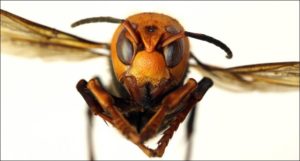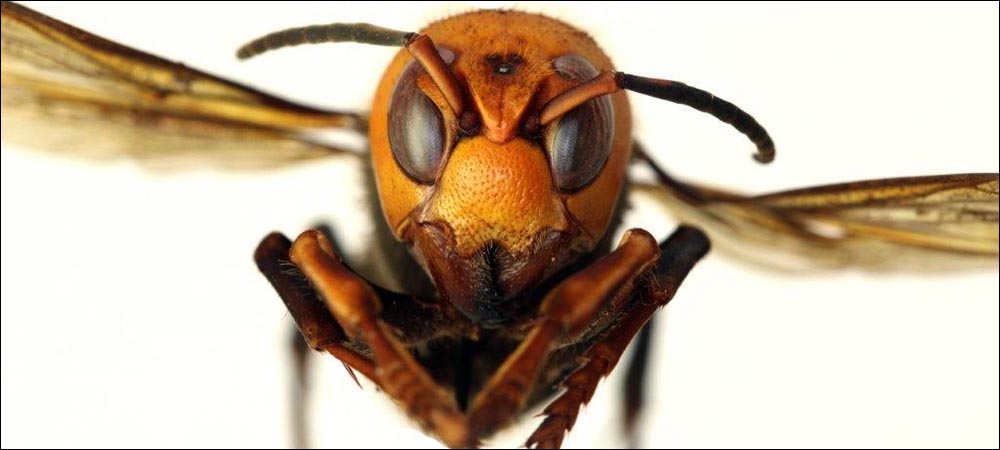Scientists have been attempting to locate and eradicate destructive Asian giant hornets (Vespa mandarinia) since several were spotted in North America last year, first in British Columbia and then in Washington State. A group of entomologists from the Washington State Department of Agriculture (WSDA) zeroed in on their invasive target in a tree cavity in late October, using wireless RF technology to eliminate the nest and kill queens that could have meant more nests as the population spread.
The scientists are now prepared for the next live worker hornet in their traps, and they intend to use the technology again to bring down another nest when the opportunity arises. The state agency spent the summer tracking the invading insects, commonly known as “murder hornets,” then turned to a wireless location system deploying very-high-frequency (VHF) RF technology. By trapping and tagging multiple hornets, they were able to utilize a handheld RF reader to locate the nest and eradicate hundreds of hornets and 76 queens.

An Asian giant hornet
Asian giant hornets are considered a potential scourge to North American farmers and the environment because of their lethal effect on native insects, including local honeybees that pollinate blueberries, raspberries and other crops (see Stirring Up a (Murder) Hornets’ Nest). They can hunt down their prey, destroy a beehive within a matter of hours, decapitate the victims and then feed the bee parts to their own young. They also dwarf other insects, at 1.75 inches in length, and wield a quarter-inch stinger that injects a neurotoxin capable of killing humans. The hornets can sting multiple times and have even been known to spray venom into a person’s eyes.
Scientists in Washington and British Columbia have been seeking to eradicate the hornets before their populations can take hold. The WSDA continues to set traps to kill the insects, but the scientists decided to also find a way to capture a live specimen and follow it to its nest. Asian giant hornets are known to nest in the ground, but physical searches for their nests had not produced results.
The group looked to technology to solve this problem, according to Sven-Erik Spichiger, a managing entomologist with the Washington State Department of Agriculture. “We had this as part of our game plan all along to do tracking,” he says. A variety of systems can track animals even as small as insects, and these have been used around the world (see RFID Helps Scientists Study Honeybees’ Homing Behavior). “We had multiple options on the table.”
During this past summer, Spichiger reports, the team considered various technologies based on what was available and affordable. “We operate on federal and state funding,” he explains, and the project budget available in May was enough to start hanging traps, but not necessarily to track hornets. If they were to use tracking technology, they would also have required a relatively long read range to track the insects in wild terrains where deploying fixed HF or UHF RFID readers would have been unrealistic.
The group worked with a University of Washington student who suggested using Bluetooth technology and even offered them battery-powered Bluetooth chips and a free tracking app on a smartphone, thereby eliminating the need for a dedicated reader. “This had a lot of appeal for us,” Spichiger says, since the chips would be available for free. The tags could then be read vi a smartphone, while the team also employed Bluetooth readers connected to their phones to extend the range. Even with this extension, however, “The downfall for us was the signal strength wasn’t long enough,” he reclls. In fact, the signal range was about 30 meters (98.4 feet), and the battery life lasted only about 12 hours.
Another option was active RF technology (not specifically RFID since the tag doesn’t send a unique ID number), such as what was used in Jersey, on the Channel Islands, and also by the USDA Animal and Plant Health Inspection Service’s Otis Laboratory to locate the spotted lanternfly. The scientists acquired a few such tags from the lab. The nano RF tags, which typically weigh just 0.15 gram (0.005 ounce), have a radio chip and an antenna, as well as a battery with an active lifespan of about eight days.

Sven-Erik Spichiger
VHF RF transmission ranges typically from 148 to 152 MHz. Rather than an ID number, the system employs multiple frequencies to enable users to differentiate between tags. The battery life depends on the rate at which the tags are set to beacon. Hornets can fly with 0.28-gram tags if each tag is applied ventrally (on the abdomen) rather than dorsally (on the back), according to research conducted at the University of Exeter. Tags attached dorsally tend to disrupt flight, the researchers found.
After trapping several live hornets, the team placed them in a cooler with ice, causing them to enter a dormant status. Once a hornet is removed from the cooler, however, scientists have just a minute or two to secure the tag. “They wake up and get pretty feisty,” Spichiger says, noting that a tag was strapped to each hornet’s underside. “We’ll have to practice a little. Holding down an angry hornet that’s waking up and not quite sure what’s going on is not as easy as tagging, say, a butterfly.”
Users are typically advised to attach the tags via Kevlar string, but the researchers had dental floss available, so they tried that instead. They first deployed a Bluetooth-based tag, by strapping it to a hornet and waiting for it to regain its faculties and fly away. “She took off past us and we couldn’t keep up with her,” Spichiger says, due to the limited read range. The scientists then spent a day trying to relocate the signal and walked right past the nest. “Either the hornet hadn’t returned to the nest or wasn’t transmitting through the tree.” Next, they tried an ATS RF tag provided by Otis Labs, as well as Lotek‘s 0.13-gram (0.005-ounce) NTP tag.
The researchers utilized several of these tags, including one that had been activated the day prior for training purposes, meaning the remaining battery life was short. They employed an ATS handheld RF reader. While one hornet was unable to fly, the one wearing the previously activated tag flew in the wrong direction, got her senses back, and then returned to the nest with the scientists in pursuit. They used the reader to detect the nest’s location, about 284 yards from the tagging site, and were surprised to find it was not underground, but rather in a dead tree. “We’d had a concern” about transmission strength, Spichiger says, because most such hornets are known to nest in the ground, and they were unsure whether the transmission could pass through the dirt.
After using a vacuum to remove the live hornets, the team took down the dead tree and returned it to their lab, where they discovered that the insect they’d captured had severed the dental floss and had left the tag in the nest. The nest had six combs containing 776 cells. They found 112 worker hornets, six unhatched eggs and 190 larvae, as well as 108 pupae (the next stage in development after larvae). They also found 76 queens, all of which indicate the population would have risen considerably if they had not intervened. Scientists expect to seek out more nests, with worker hornets becoming active again as summer approaches. “The fact that we’ve done all this now,” Spichiger says, “we can be a little leaner and more efficient and really put the tools and tactics to the test.”


